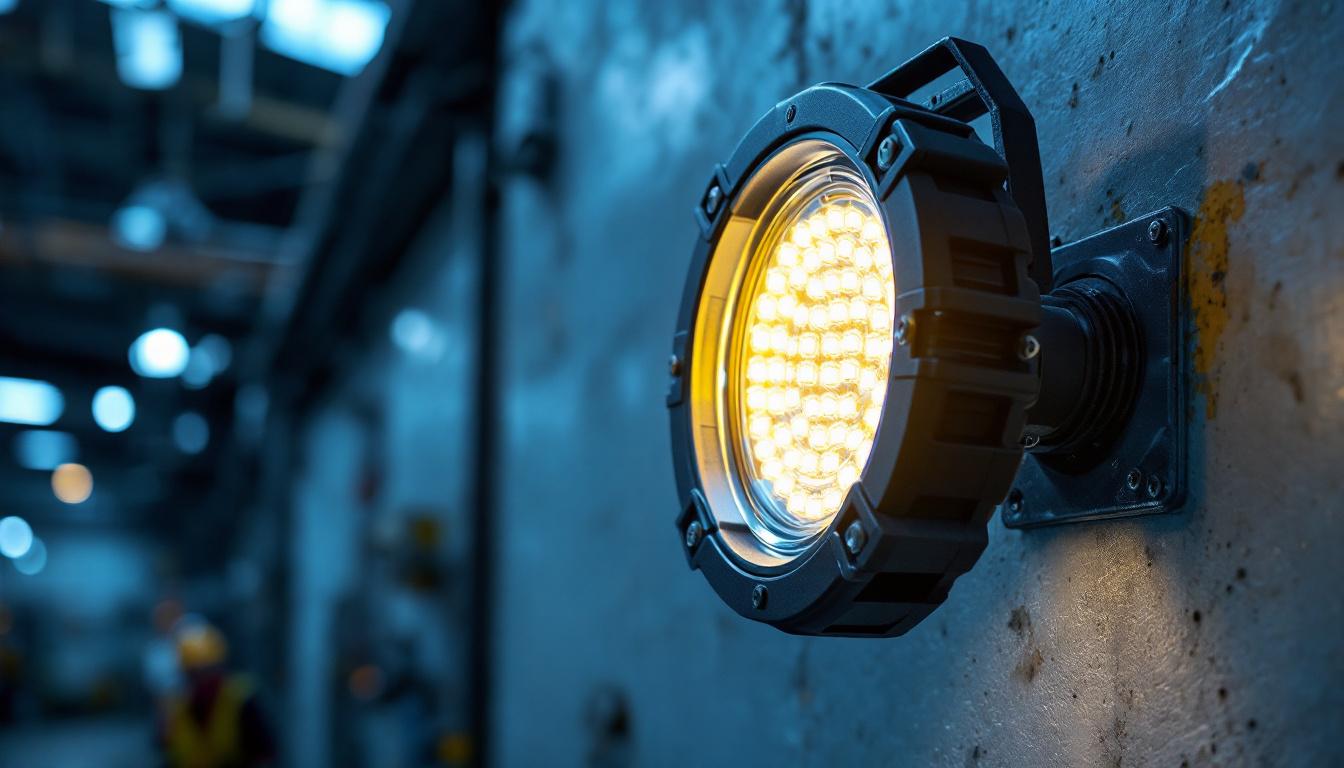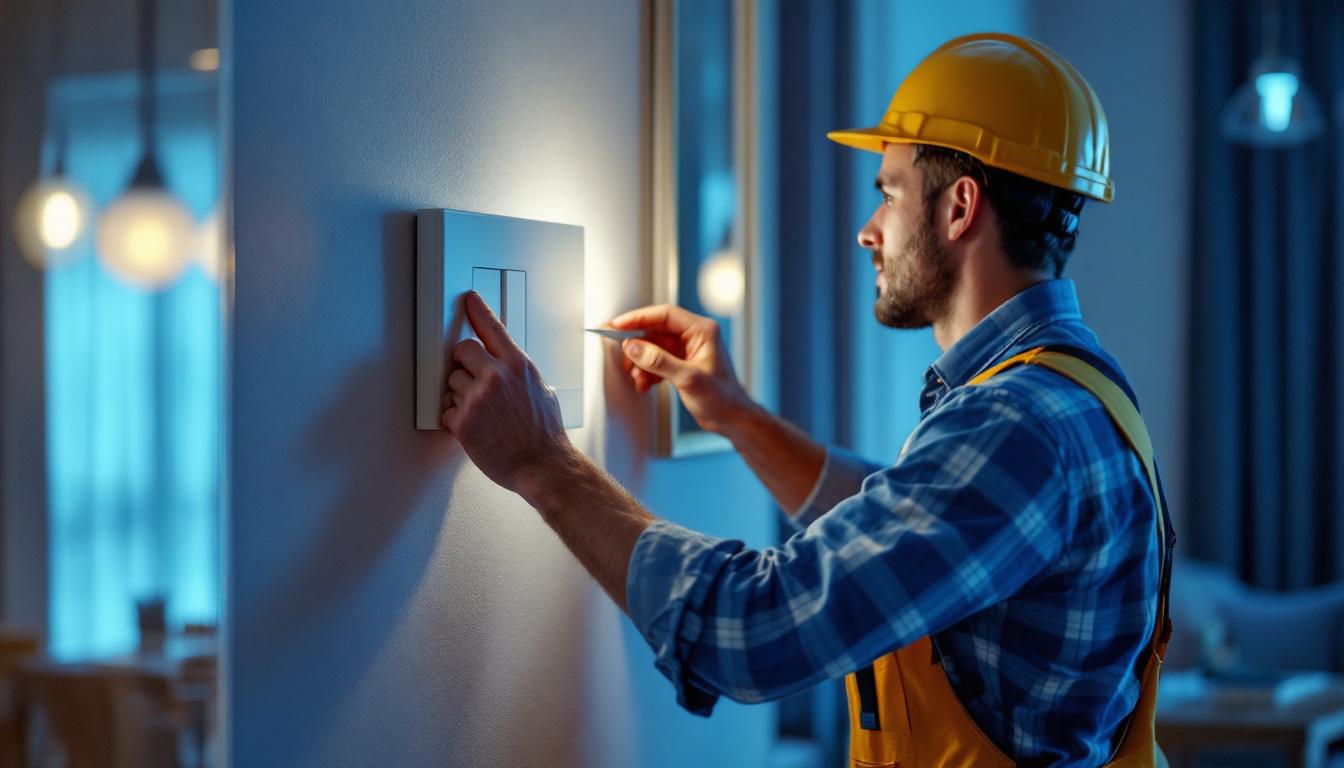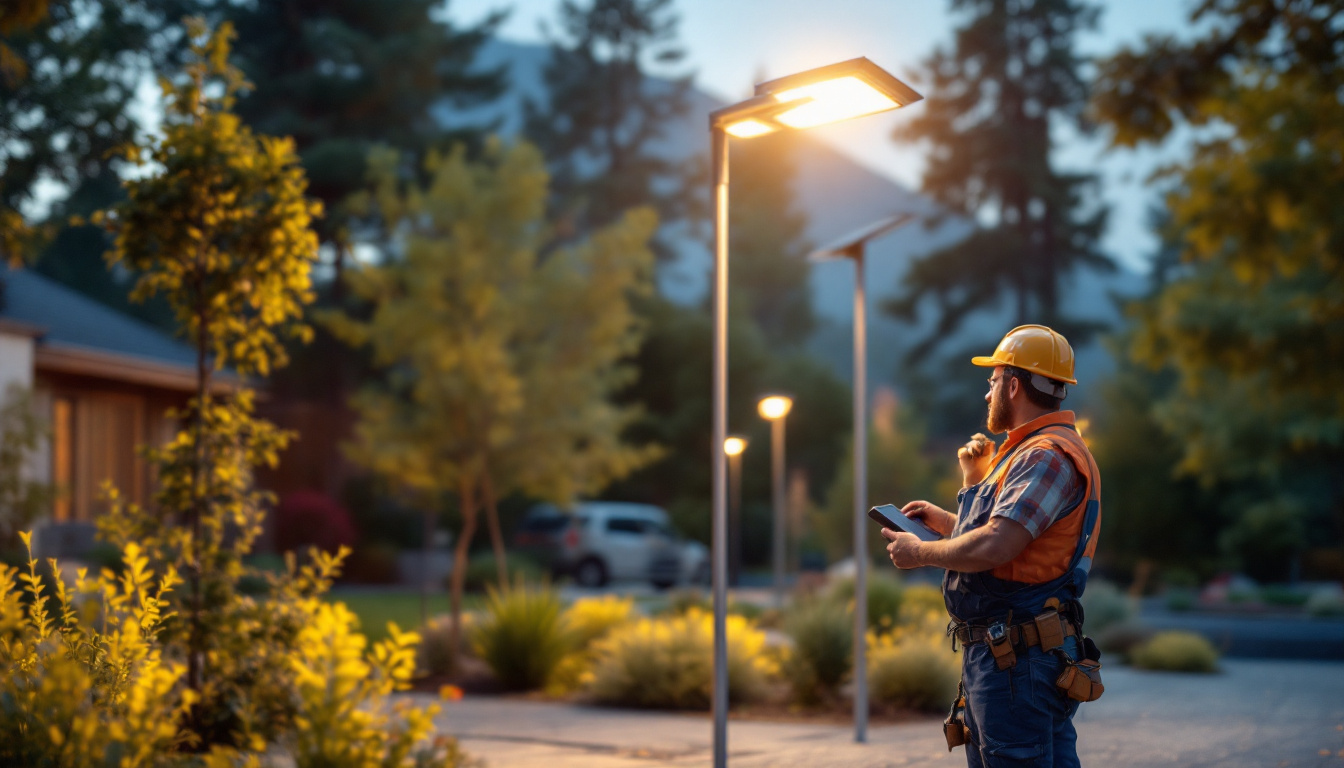
In the realm of lighting projects, especially those conducted in hazardous environments, safety and efficiency are paramount. The advent of LED explosion-proof lights has revolutionized how contractors approach these challenging tasks. These lights not only provide illumination but also ensure compliance with safety regulations, making them indispensable for any lighting contractor working in potentially explosive atmospheres.
Explosion-proof lighting is designed to operate safely in environments where flammable gases, vapors, or dust may be present. These fixtures are constructed to contain any explosion within the fixture itself, preventing ignition of the surrounding atmosphere. This makes them essential in industries such as oil and gas, chemical manufacturing, mining, and pharmaceuticals. The importance of such lighting cannot be overstated, as the consequences of an explosion can be catastrophic, leading to loss of life, significant property damage, and environmental harm. Therefore, investing in reliable explosion-proof lighting is not just a regulatory requirement; it is a critical component of workplace safety and operational integrity.
Explosion-proof lights are built with robust materials that can withstand extreme conditions. They feature sealed enclosures that prevent the entry of hazardous substances, and their design often includes thermal management systems to dissipate heat effectively. Additionally, these lights undergo rigorous testing to meet industry standards, ensuring they can operate safely in high-risk environments. The testing process often includes simulations of various explosive atmospheres, allowing manufacturers to verify that their products can withstand potential ignition sources without compromising safety. This meticulous attention to detail not only protects workers but also enhances the overall reliability of operations in hazardous locations.
LED technology offers numerous advantages over traditional lighting solutions. LED explosion-proof lights consume less energy, resulting in lower operational costs. They also have a longer lifespan, reducing the frequency of replacements and maintenance. Furthermore, LEDs emit less heat, which is crucial in preventing ignition in explosive atmospheres. In addition to these benefits, LED lights provide superior illumination quality, with the ability to produce bright, focused light that enhances visibility in dark or poorly lit areas. This improved visibility is particularly important in emergency situations, where every second counts, and can significantly reduce the risk of accidents. Moreover, the durability of LED lights means they are less susceptible to damage from vibrations or impacts, making them an ideal choice for rugged industrial environments.
When selecting LED explosion-proof lights, several key features should be considered to ensure they meet the specific needs of a project. Understanding these features can aid lighting contractors in making informed decisions that enhance safety and efficiency.
The materials used in the construction of LED explosion-proof lights play a critical role in their performance. High-quality aluminum or stainless steel housings are commonly used to provide strength and resistance to corrosion. Additionally, impact-resistant glass is often employed to protect the light source from physical damage. This robustness is particularly important in industrial settings where equipment is frequently exposed to harsh chemicals, extreme temperatures, and mechanical stress. Manufacturers often subject these lights to rigorous testing, ensuring they can withstand not only the elements but also the rigors of daily operations in demanding environments.
Ingress protection (IP) ratings indicate how well a light fixture can resist dust and moisture. For explosion-proof lighting, a high IP rating is essential to ensure that the fixture remains operational in harsh conditions. A rating of IP66 or higher is typically recommended for environments where dust and water exposure is a concern. Such ratings are crucial in industries like oil and gas, chemical manufacturing, and food processing, where the presence of flammable gases or liquids can pose significant risks. Understanding the specific environmental conditions where the lights will be installed helps in selecting the right IP rating, ultimately contributing to the safety and longevity of the lighting solution.
Lighting performance is another crucial factor. LED explosion-proof lights should provide adequate lumen output for the intended application while maintaining high energy efficiency. Look for fixtures with a high lumen-per-watt ratio, as this indicates better performance and lower energy consumption. Moreover, the color temperature of the light emitted can also influence visibility and safety; cooler temperatures tend to enhance visibility in industrial settings, while warmer tones may be preferred in areas requiring a more comfortable ambiance. The ability to dim or adjust the lighting can further enhance energy savings and extend the lifespan of the fixtures, making them a versatile choice for various applications.
LED explosion-proof lights are versatile and can be utilized across various industries. Their ability to operate safely in hazardous environments makes them suitable for a wide range of applications.
In the oil and gas sector, explosion-proof lighting is vital for drilling rigs, refineries, and storage facilities. These environments often contain flammable gases, making reliable lighting essential for safety and operational efficiency. LED fixtures can illuminate work areas, ensuring that personnel can perform tasks safely. Furthermore, the long lifespan of LED lights reduces the frequency of replacements, minimizing downtime and maintenance costs, which is particularly beneficial in remote locations where access to replacement parts can be challenging.
Chemical plants often handle volatile substances that pose significant risks. Proper lighting is crucial for maintaining safety standards and ensuring that workers can see clearly during operations. LED explosion-proof lights provide the necessary illumination without compromising safety. Additionally, the energy efficiency of LED technology translates to lower operational costs, allowing chemical manufacturers to allocate resources more effectively. The ability to customize LED fixtures with different color temperatures also helps in creating an optimal working environment, enhancing visibility and reducing eye strain for workers engaged in intricate tasks.
Mining operations frequently involve working in confined spaces where dust and gases may accumulate. LED explosion-proof lights enhance visibility in these challenging environments, allowing for safer navigation and operation. Their durability also ensures they can withstand the rigors of mining activities. Moreover, the rugged construction of these lights often includes features such as impact resistance and weatherproofing, making them ideal for the harsh conditions found underground or in open-pit mines. The low heat emission of LED lights also contributes to a safer atmosphere, as it reduces the risk of igniting flammable materials that may be present in mining operations.
In food processing facilities, maintaining hygiene and safety standards is paramount. LED explosion-proof lights are increasingly being used in these environments, where the risk of dust and flammable vapors can be significant. These lights not only provide bright, clear illumination but are also designed to be easy to clean, ensuring compliance with health regulations. Their energy efficiency contributes to lower electricity costs, which is crucial for facilities operating on tight margins. Furthermore, the use of LED technology minimizes the heat generated in the workspace, helping to maintain a stable temperature for sensitive food products.
The pharmaceutical industry also benefits from the use of LED explosion-proof lights, particularly in areas where volatile chemicals are handled. In laboratories and production areas, precise lighting is essential for accurate measurements and quality control. LED lights can be tailored to provide specific wavelengths that enhance visibility for detailed work, while their robust design ensures they can withstand the rigors of a laboratory environment. Additionally, the longevity of LED lights reduces the need for frequent replacements, allowing pharmaceutical companies to focus on their core operations without interruptions caused by lighting failures.
Installing LED explosion-proof lights requires careful planning and execution. Proper installation is critical to ensure the safety and effectiveness of the lighting system.
Before installation, it is essential to understand the regulatory requirements governing hazardous locations. Compliance with standards such as the National Electrical Code (NEC) and the Occupational Safety and Health Administration (OSHA) is crucial. These regulations dictate the types of fixtures that can be used and their installation procedures.
The placement of explosion-proof lights is vital for achieving optimal illumination. Lighting contractors should consider the layout of the area, the height of the fixtures, and the spacing between them. Proper placement ensures that all areas are adequately illuminated, reducing the risk of accidents.
Electrical connections for explosion-proof lights must be made with care to prevent arcing or sparking. Using appropriate conduit and junction boxes that meet explosion-proof standards is essential. Additionally, contractors should ensure that all wiring is properly rated for the environment in which it will be installed.
Regular maintenance of LED explosion-proof lights is necessary to ensure their longevity and performance. Implementing a maintenance schedule can help identify potential issues before they become significant problems.
Routine inspections should be conducted to check for any signs of wear or damage. This includes examining the housing for corrosion, ensuring that seals remain intact, and verifying that the light source is functioning correctly. Early detection of issues can prevent costly repairs and downtime.
Keeping explosion-proof lights clean is essential for maintaining their efficiency. Dust and debris can accumulate on the fixtures, reducing light output. Using a soft cloth and appropriate cleaning solutions can help maintain clarity and performance without damaging the fixtures.
In some cases, components may need to be replaced to maintain the functionality of the lighting system. Contractors should keep a stock of essential replacement parts to minimize downtime. Additionally, staying informed about advancements in LED technology can provide opportunities for upgrades that enhance performance and efficiency.
While the initial investment in LED explosion-proof lights may be higher than traditional lighting solutions, the long-term benefits often outweigh the costs. Understanding the financial implications can help contractors make informed decisions.
The upfront cost of LED explosion-proof lights can be significant, but their energy efficiency and longevity lead to substantial savings over time. Reduced energy consumption translates to lower utility bills, while the extended lifespan decreases the frequency of replacements and maintenance.
Calculating the return on investment for LED explosion-proof lights can provide valuable insights. By analyzing the energy savings, maintenance costs, and potential downtime reductions, contractors can demonstrate the financial benefits of transitioning to LED technology. This information can be crucial when justifying the investment to stakeholders.
LED explosion-proof lights are an essential component of successful lighting projects in hazardous environments. Their safety features, energy efficiency, and durability make them a preferred choice for lighting contractors. By understanding the key features, applications, and maintenance considerations, contractors can ensure that their lighting systems are not only compliant with regulations but also effective in enhancing safety and productivity.
As industries continue to evolve, the importance of reliable and safe lighting solutions will only grow. Investing in LED explosion-proof lights is not just a practical decision; it is a commitment to safety and excellence in lighting projects. Embracing this technology can lead to enhanced operational efficiency and a safer working environment for all involved.
Ready to elevate your lighting projects in hazardous environments with the safety, efficiency, and durability of LED explosion-proof lights? Look no further than LumenWholesale, where we provide contractors with the highest quality, spec-grade lighting products at unbeatable wholesale prices. Say goodbye to inflated markups and hello to superior lighting solutions that meet the strictest industry standards. Plus, with free shipping on bulk orders, you can secure premium lighting at the best value — all without hidden fees or compromises. Don’t miss out on the perfect blend of quality, affordability, and convenience. Make the smart choice for your lighting needs and experience Wholesale Lighting at the Best Value today with LumenWholesale.

Explore how the electric light switch revolutionized the lighting industry, transforming the workflow of contractors and enhancing efficiency.

Discover essential insights for lighting contractors with our comprehensive guide on light switches.

Discover essential tips and common pitfalls for lighting contractors working with tall solar lights.

Discover how mastering color rendition can enhance your lighting projects and increase profitability.